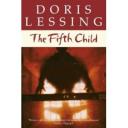A very gothic, unsettling nightmarish story – reminds you each moment of Frankenstein, one of my favourite stories.
Monstrous child, gothic sentiments, questions of value, responsibility and guilt, nature X culture, conformation X animal energy.
The meeting of David and Harriet Lovatt has something similar to that of the protagonists in Grass is Singing. David and Harriett want to have a big happy family, against the trend of the times. Here is an unrealistically happy family life built around very outdated and unqualified assumptions of contentment and love. Their whole life is based on preposterous assumptions like they can buy a huge bungalow with no money, they can rear eight children with no resources etc. Family and friends gather in the big house during the holidays. A make-belief contentment, pretentiously cut out from the unrest of the outside world and its financial depression, unemployment and corruption. That world is always there in the story, lurking around, but never entering the plot. Then barges in the troll-child, Ben, who destroys the make- belief world, disperses the family and finally brings in the unemployed corrupted youth right on to the family table to watch riot on television, to take part in the riot.
In a pure literature vein, the family dining table is very iconic. The enormous trunk is criticized by all their relatives who did not see the point in having such a big one for just a husband and wife. It looked preposterously lavish. The table then turns into a place of the make-belief happiness of the whole family, where they come year after year for Christmas celebrations, forgetting their own family tensions. Major decisions about the family, especially about who is going to sponsor the next initiative by the Lovatts, are taken on the dining table. Ben reenters the world of the perfect family, as a tamed child by eating breakfast on the table. And finally he brings his gang there, for quite a different kind of party. The table witnesses the family, its beginning, growth and final diffusion.
As you read, you cannot help but to see that the story has more layers, again, like Frankenstein.
Monstrosity getting revealed within apparent perfection.
The taming of the animal-like “hyperactive†child to conform to the civilized perfect family.
Fear – what Harriet uses to tame Ben, but also what she herself has in her about the unknown and the unpredictable.
The unignorable ugly, hooligan side of the society, which is your own making. How it reacts when not recognized, when ignored.
One could go on adding. Please add your thoughts.
